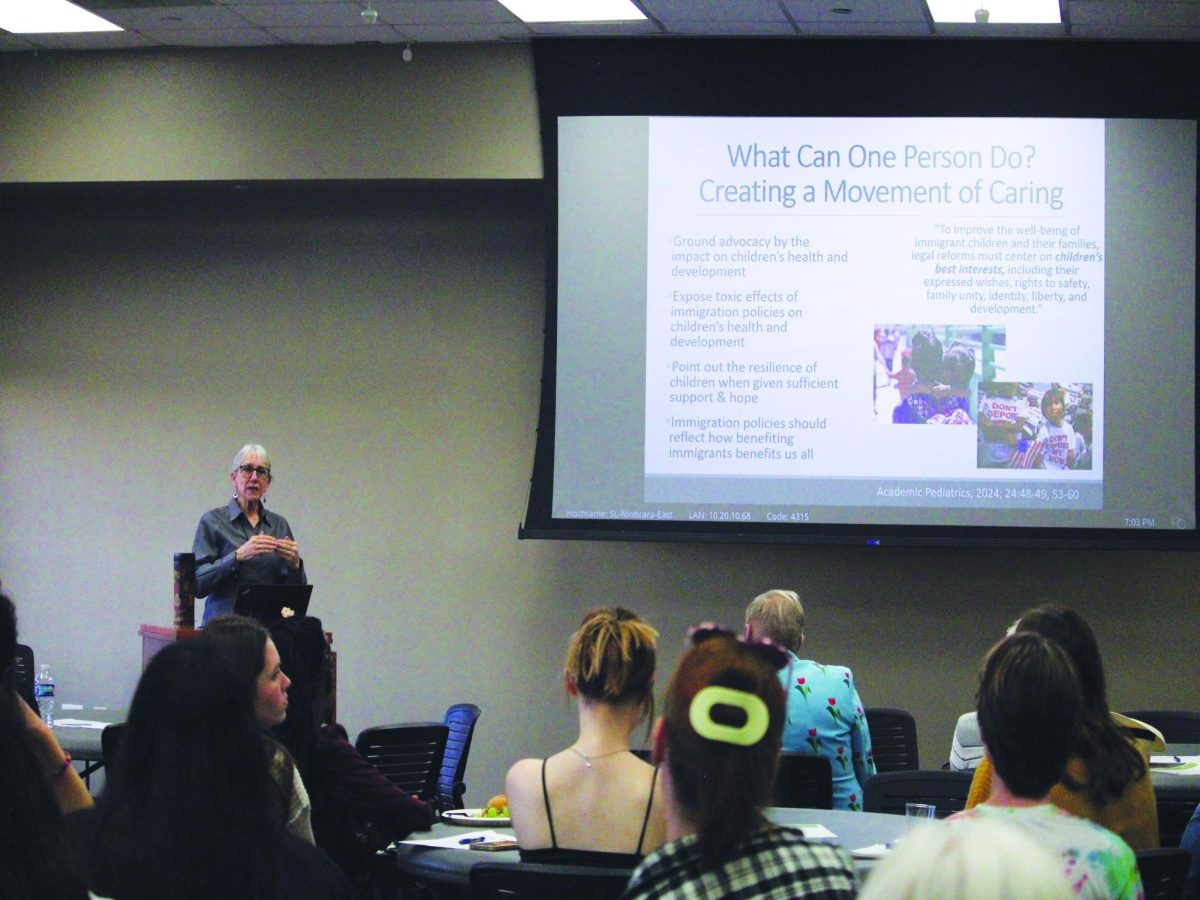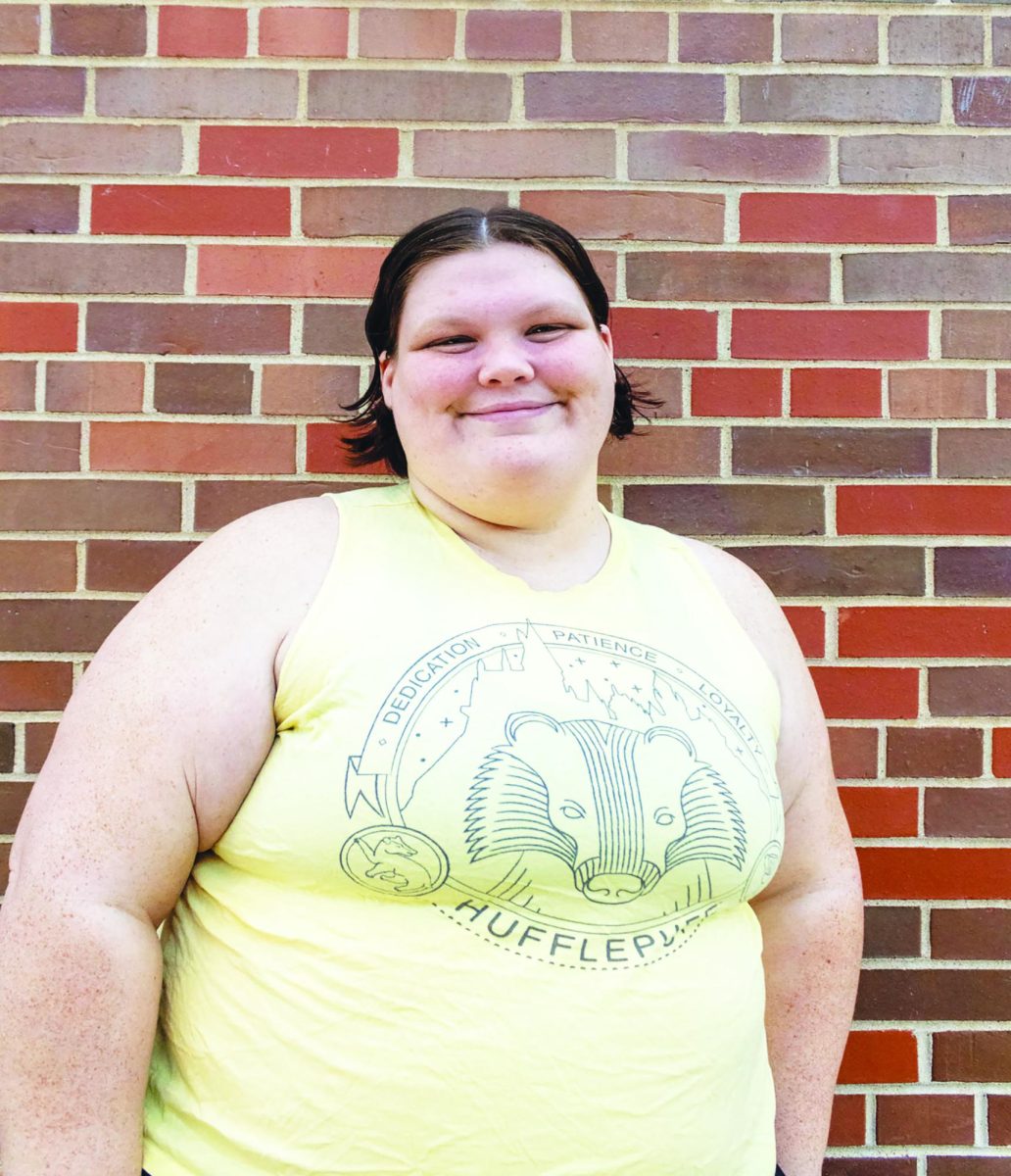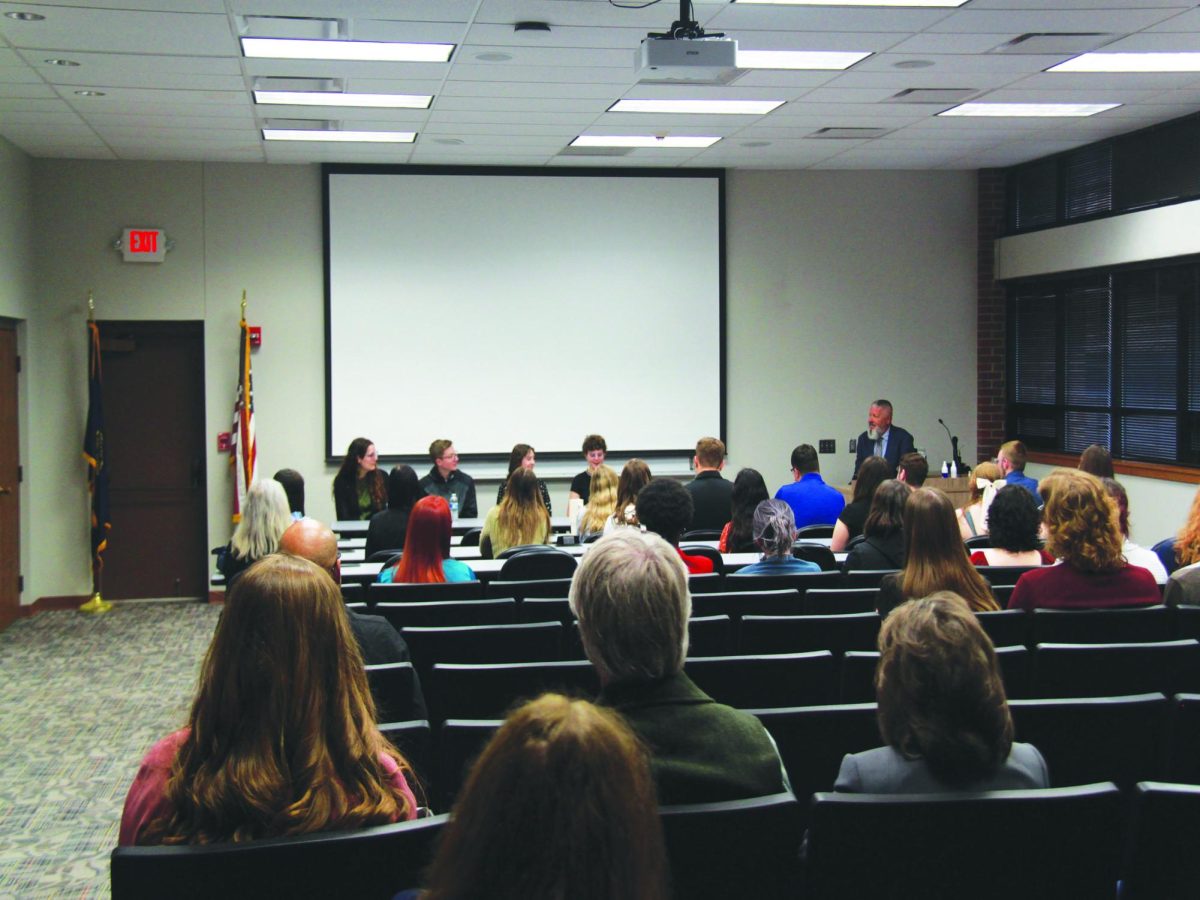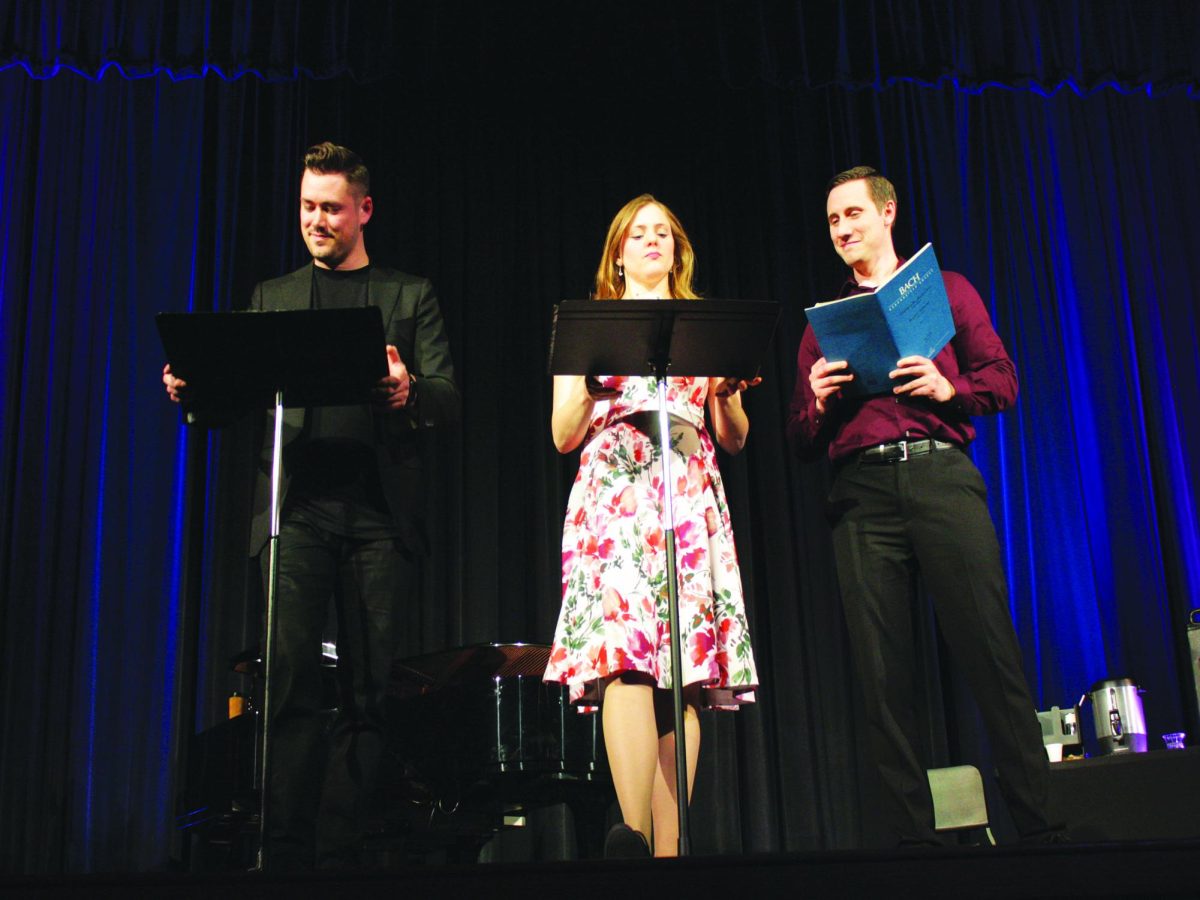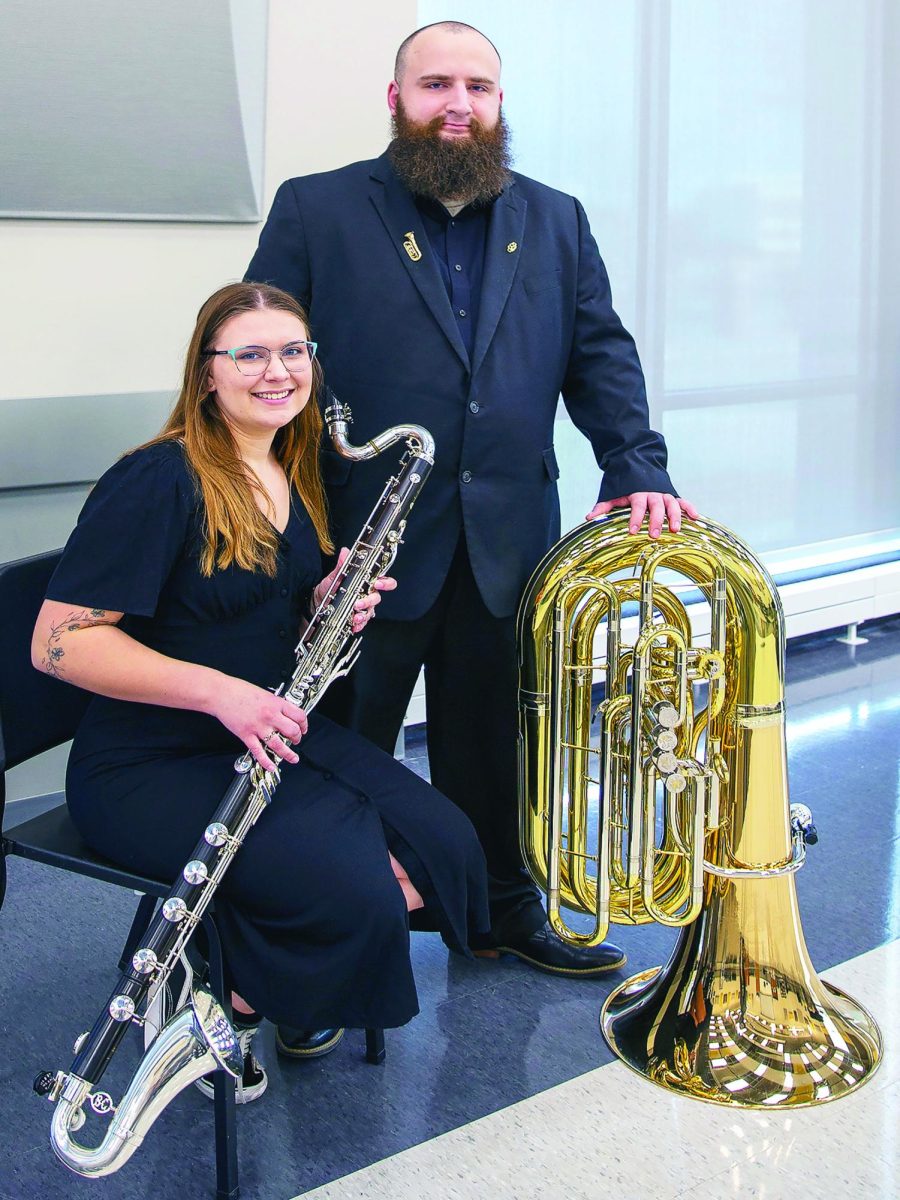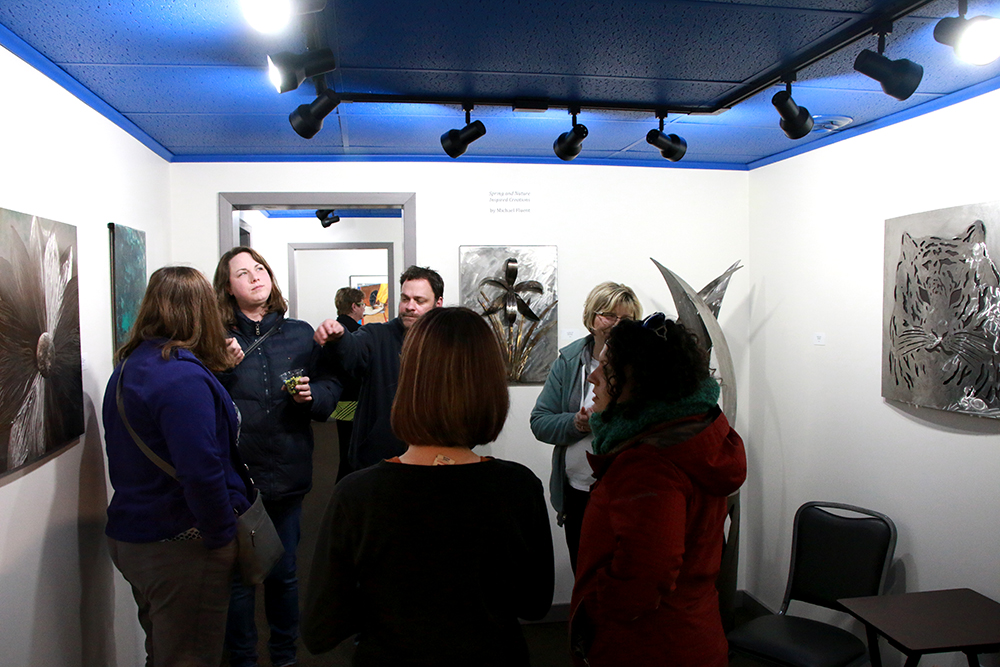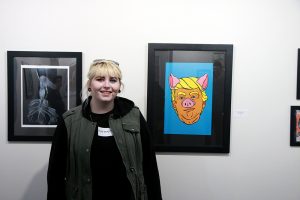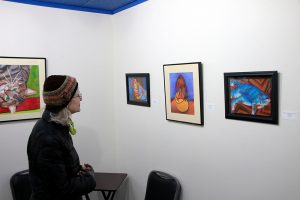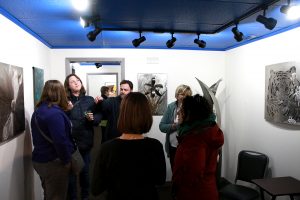Featured artists visit student exhibit
March 14, 2018
Diana Behl and Andrew Kosten were featured artists who came to speak with Wayne State students about their artwork.
Behl is an assistant professor for the School of Design at South
Dakota State University. Kosten has his own print shop called Gum
Pal Press.
“It’s really fun as an educator to see new campuses,” said Behl. “This is the first time I have visited Wayne State – and also to interact with students.”
She said “Everyday Is” is a central theme in her artwork.
“I engage in processes of inquiry, using a language of print media, collage, drawing to examine memory and my quotidian surroundings,” said Behl.
She said that while looking at her surroundings she observes and
celebrates the ordinary.
“These activities and final work function as records of a lived experience,” said Behl.
With print making, multiple pieces can be made.
“I end up with a lot of stuff,” said Behl. “I started cutting them up and rearranging things and putting new things together and thinking about ‘how can I extend the print in as many forms as possible?’”
She said that one thing musician – John Cage focused on is the idea of chance especially with the cut up process.
“I’m consistently thinking about organization, chance – is it really by chance if I’m choosing what’s on my studio table,” said Behl.
She said that she would take her phone and/or her camera with her and just take pictures of things that interested her.
“I work on copper (plates), it has the compacity to capture a lot of history,” said Behl. “You can make a mark and work on an aqua-tint and do all kinds of stuff with it.”
She said that it’s proof that the piece is documented as being a certain way at a certain time.
Behl said that it can be sanded down or away, but it will always
be there.
“Even if you’re sanding and scraping, working reductively that content that was once there will always (have a suggestion) that it was once there,” said Behl.
Kosten said that when he was younger he liked the art in “Goodnight Moon” and even at a young age, wanted to create something like that. He said that he liked the detail.
“I thought, even as a little kid, ‘Man, I want to be the person that does something like this one day,’” said Kosten.
He said that when he was in graduate school someone came up to him telling him that one of his drawings looked like it could have come from a German book from the 1800s. The book is called “Der Struwwelpeter” and translates in English to “shock-headed Peter.”
Kosten said that his artwork takes after similar works like “Der Struwwelpeter.” He said that he takes and reuses some plates for print making.
“As a painter, I work in large scale, where as a print maker, I work in smaller scale,” said Kosten. “My work is really more about form of elements and choosing items, collectors items, that I have a daily interaction with.”
He said he painted until he figured out what he wanted to do and what would describe him. He said he used to create work quickly, whereas now he has slowed down his thought process and takes his time.
“There was a figure development that started to creep into my work, creepily little heads,” said Kosten. “So while I was a painter, I had this other body of work that none of the others saw, that weren’t appropriate (for painting) until one day I just
busted out this sketchbook of all these line studies.”
He said people told him the works in his sketchbook were his content telling him that there was more possibility. A professor of his introduced him to print.
“He told me to, quote, ‘join the dark side,’” said Kosten. “He introduced me to all of these print makers.”
He said this helped him discover he liked it and how his work started resembling works of the artist Goya.
“I really connected with Andrew’s work,” said senior Lily Roberts. “His detail and his illustrator connection is something that I connect with well because I am going to school to become an illustrator.”
She said she appreciates his detail and his line quality, as well as other aspects that she doesn’t see a lot of in painterly fashion.
“Getting to see his work and seeing the artist talk about it, like seeing where he gets his inspiration and my connection to that is really impressive,” said Roberts. “I really appreciate seeing something like that here.”

